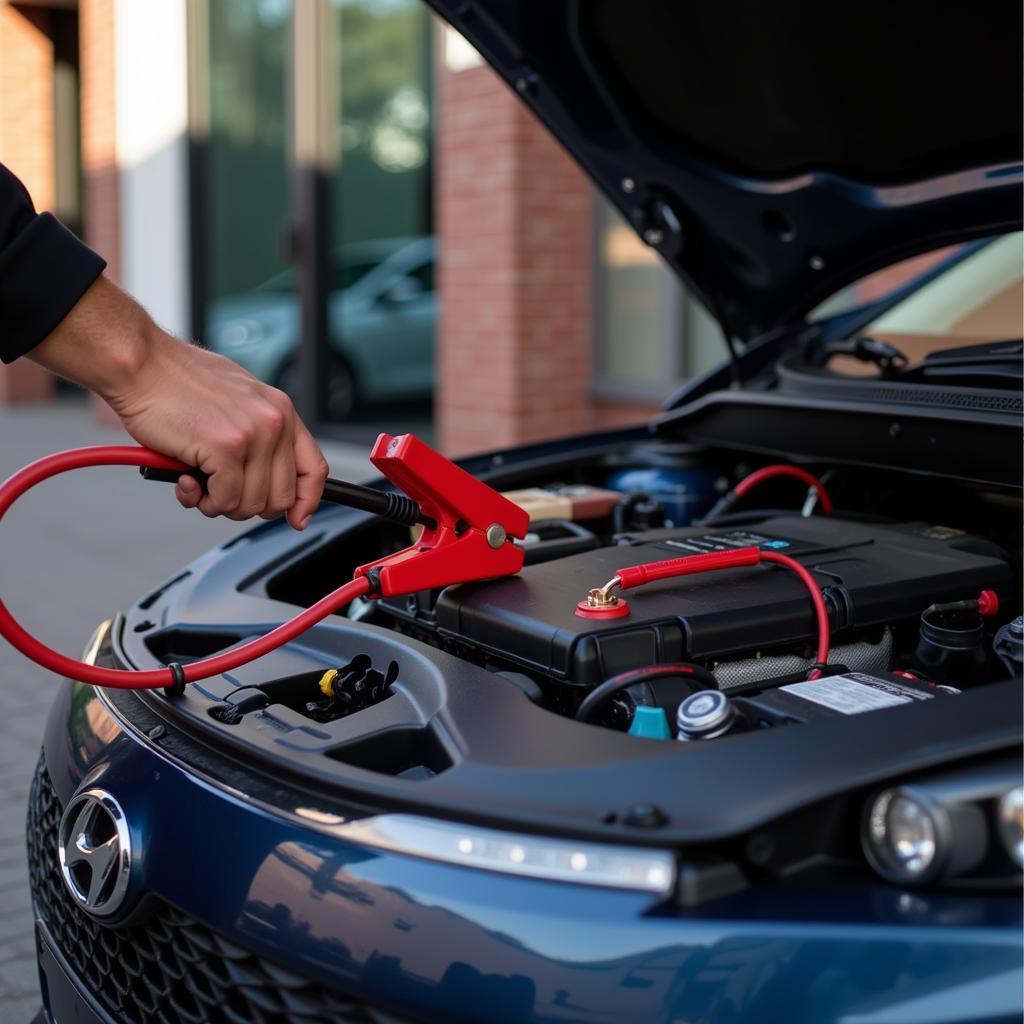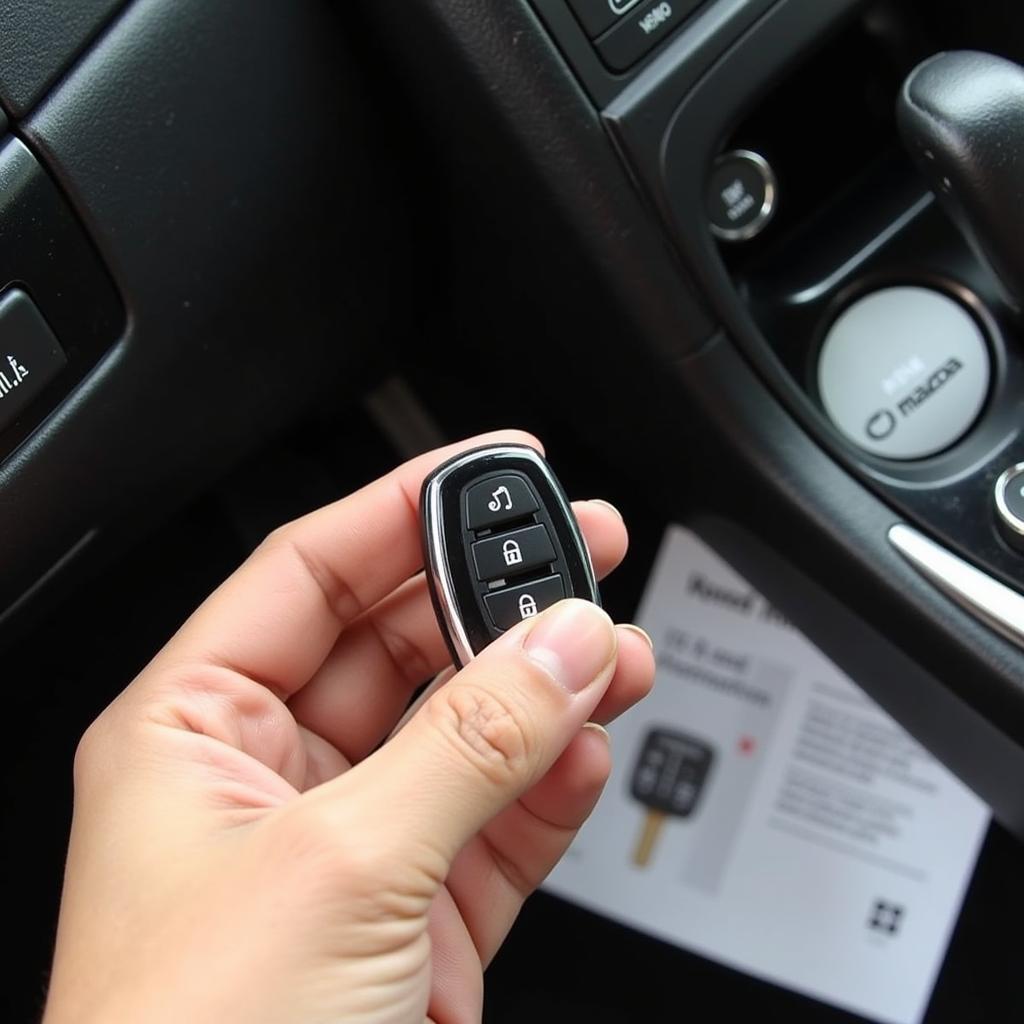The brake warning light on your dashboard is a crucial safety feature, designed to alert you of potential braking system issues. When illuminated on your 2004 Toyota Sequoia, it signals a problem requiring immediate attention. Ignoring it could lead to reduced braking performance and potentially dangerous situations. This comprehensive guide delves into the common causes of a lit brake warning light in a 2004 Toyota Sequoia and provides insights into possible solutions.
Understanding Your Sequoia’s Brake Warning Light
Before jumping into diagnostics, it’s important to understand what triggers the brake warning light. Generally, it can indicate one or more of the following:
- Low brake fluid level: This is the most common culprit. Brake fluid is essential for transmitting force from the brake pedal to the wheels, and a leak or low fluid level can significantly impair braking performance.
- Engaged parking brake: While seemingly obvious, it’s easy to overlook. Even a slight engagement of the parking brake can trigger the warning light.
- Faulty brake light switch: This switch activates the brake lights when you press the pedal. If faulty, it can disrupt the brake warning light system.
- Worn brake pads: Most modern vehicles, including the 2004 Sequoia, have brake pad wear sensors. These sensors trigger the warning light when the brake pads thin down to a certain level, indicating the need for replacement.
- ABS issue: If your Sequoia’s Anti-lock Braking System (ABS) malfunctions, the brake warning light might illuminate alongside the ABS warning light. This suggests an issue within the ABS module, wheel speed sensors, or related components.
Troubleshooting a 2004 Toyota Sequoia Brake Warning Light
While this guide provides general information, always consult your vehicle’s owner’s manual for specific instructions and warnings related to your Sequoia’s braking system.
1. Check the parking brake: Ensure the parking brake is fully released. Sometimes, even a slight engagement can illuminate the warning light.
2. Inspect the brake fluid level:
- Locate the brake fluid reservoir under the hood. It’s typically a translucent plastic container with a black cap labeled “Brake Fluid.”
- Check the fluid level. It should fall between the “Min” and “Max” lines marked on the reservoir.
3. Inspect for leaks:
- Carefully examine the area around the brake fluid reservoir, the master cylinder (connected to the reservoir), and along the brake lines running toward the wheels. Look for any signs of fluid leakage, which often appears as a wet or greasy area.
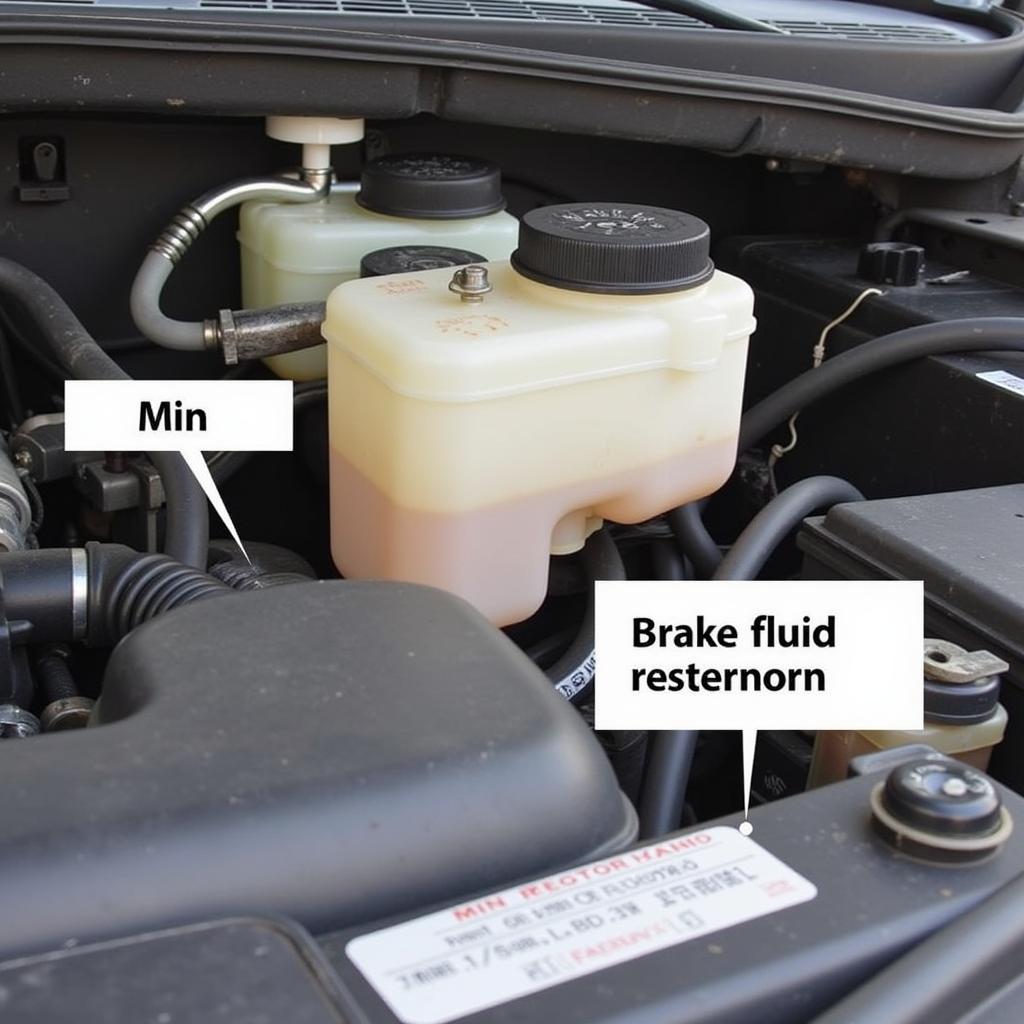 Brake Fluid Reservoir
Brake Fluid Reservoir
4. Check the brake lights: Have a friend press the brake pedal while you observe the brake lights. If they don’t illuminate, the brake light switch might be faulty.
5. Consider brake pad wear: If you’ve recently noticed a squealing or grinding sound when applying the brakes, worn brake pads are likely the culprit. It’s time to have them inspected and potentially replaced.
“Ignoring a brake warning light is like ignoring a flashing ‘check engine’ light on an airplane,” says John Davis, a senior automotive technician with over 20 years of experience. “It’s a critical safety system, and addressing the issue promptly is crucial for your safety and the safety of others on the road.”
When to Seek Professional Help
If your brake warning light remains on after performing these checks, or you suspect a more complex issue like an ABS malfunction, it’s crucial to seek professional assistance.
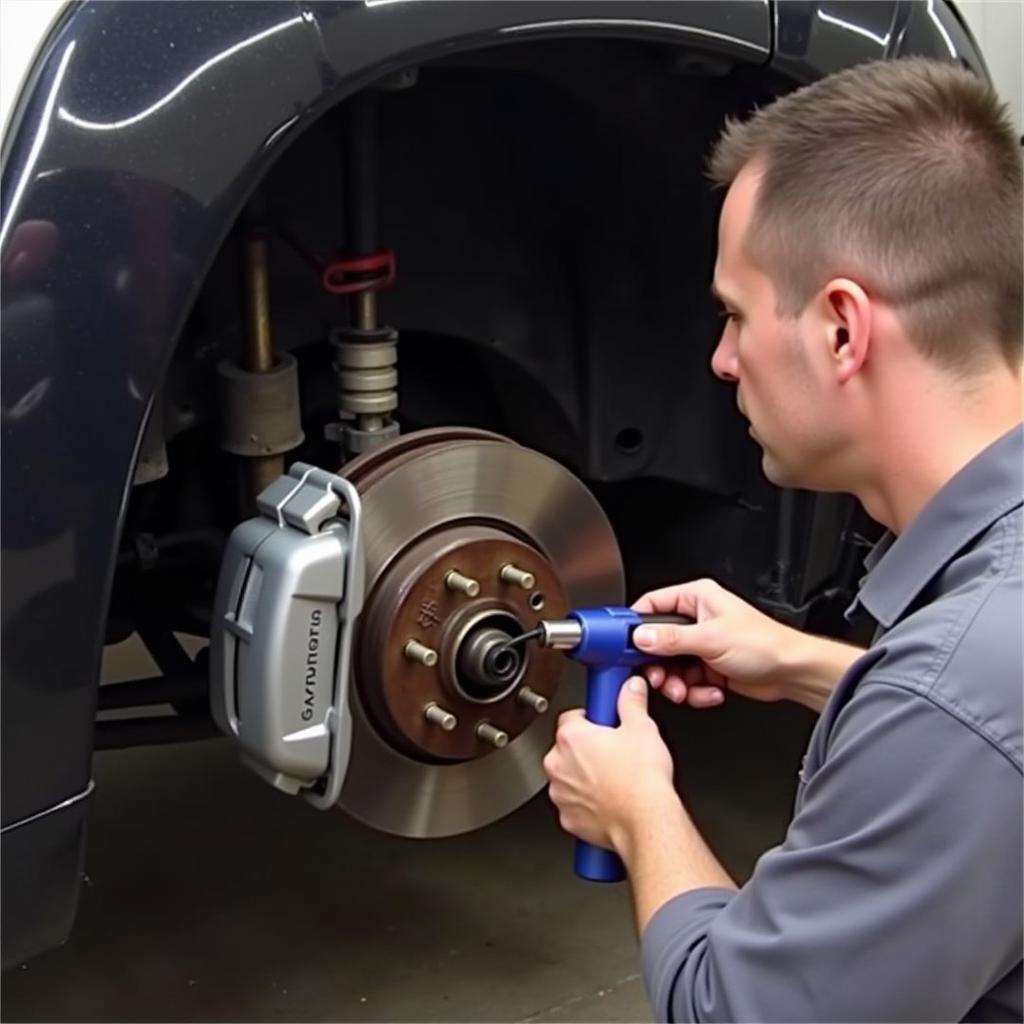 Brake System Inspection
Brake System Inspection
Modern vehicles like the Sequoia often require specialized diagnostic equipment to pinpoint the exact cause of brake system problems.
Preventative Maintenance for Your Sequoia’s Brakes
- Regular brake fluid flushes: Consult your owner’s manual for the recommended brake fluid flush intervals, usually every 2-3 years or as specified by mileage.
- Timely brake pad replacements: Don’t wait for the warning light to illuminate before replacing worn brake pads. Proactive replacement ensures optimal braking performance and prevents damage to other brake components.
- Annual brake system inspections: During routine maintenance, have a qualified mechanic inspect the entire brake system, including the lines, calipers, rotors, and hoses, for any signs of wear or damage.
FAQs About Brake Warning Lights in a 2004 Toyota Sequoia
1. Can I drive my Sequoia with the brake warning light on?
It’s strongly advised against driving with an illuminated brake warning light. Doing so could lead to reduced braking performance and potentially dangerous situations.
2. How much does it cost to fix a brake warning light issue?
The cost varies greatly depending on the underlying cause. A simple brake fluid top-up is inexpensive, while replacing major components like the master cylinder or ABS module can be significantly more costly.
3. Is it safe to add brake fluid myself?
Yes, you can add brake fluid to top up the reservoir if the level is low. However, it’s crucial to use the correct type of brake fluid specified in your owner’s manual.
4. How often should I replace my Sequoia’s brake pads?
Brake pad lifespan depends on driving habits and conditions. Generally, front brake pads tend to wear faster than rear ones. It’s recommended to have them inspected every 12,000 miles or annually.
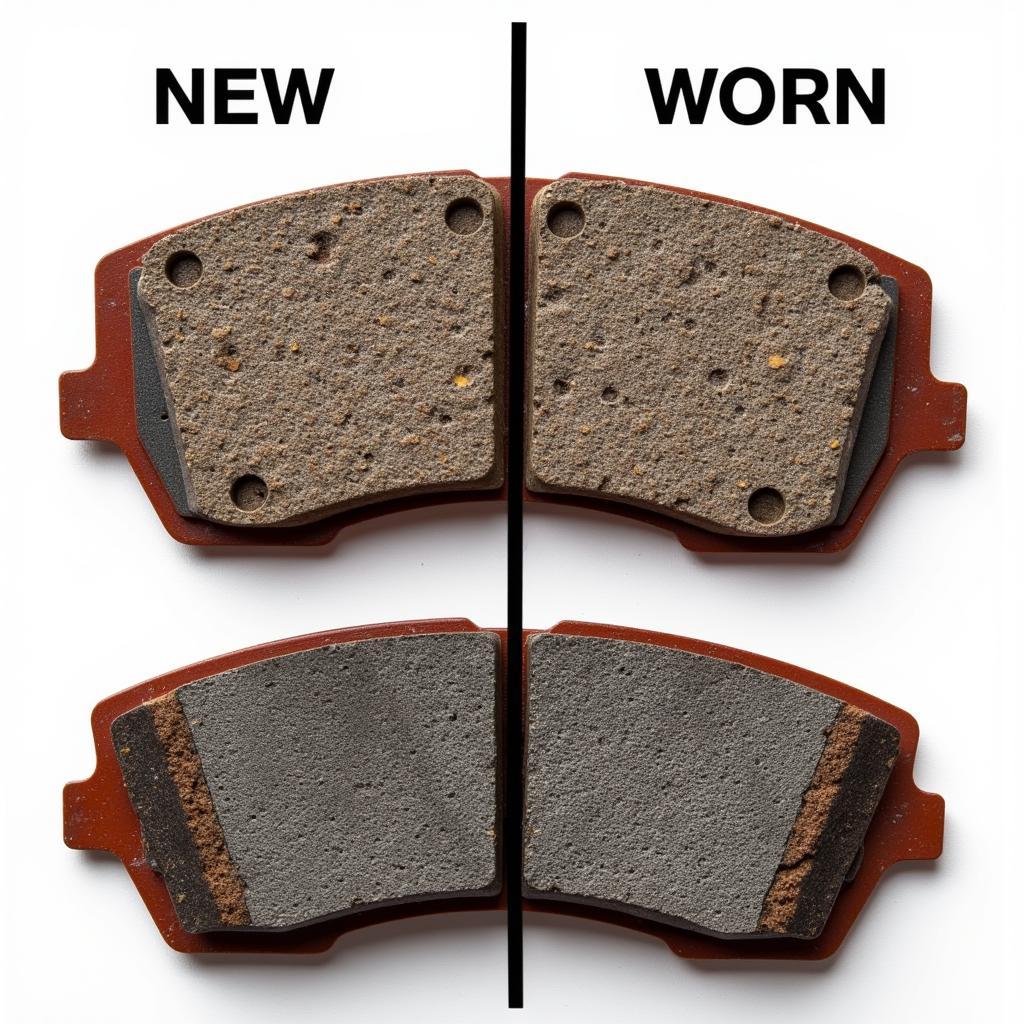 Brake Pad Comparison
Brake Pad Comparison
5. Can a faulty ABS sensor cause the brake warning light to come on?
Yes, a malfunctioning ABS sensor can trigger the brake warning light, often alongside the ABS warning light. The ABS system relies on these sensors to function correctly, and any issues can disrupt the system and trigger warning lights.
Conclusion
A glowing brake warning light in your 2004 Toyota Sequoia should never be ignored. By understanding the common causes and following the troubleshooting steps outlined in this guide, you can address the issue promptly and ensure safe braking performance. Remember, regular maintenance and timely repairs are key to keeping your Sequoia’s braking system in optimal condition.


